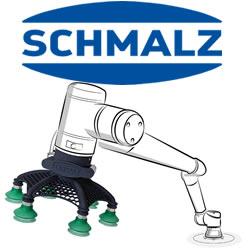New Low-Altitude Traffic Management System Could Ensure Safe Drone Delivery
Researchers at the University of Nevada, Reno are now working on a new, low-altitude traffic management system to keep fast-moving flyers safer as they cruise through increasingly crowded skies.
The University is one of a handful of organizations participating in the first phase of the NASA Ames Unmanned Aerial Systems Traffic Management project to enable safer use of low-altitude airspace, of 500 feet and below, where autonomous aerial vehicles, helicopters, gliders and other general aircraft are operating.
"With all of the many uses being developed for unmanned aerial systems, air-traffic nearer to the ground has the potential to become very crowded," Warren Rapp, business director for the University's Nevada Advanced Autonomous Systems Innovation Center, said. "We're pleased to be part of this leading-edge, forward-thinking project."
The University is working with Flirtey, the world's first drone delivery service, and Drone America, one of the world's top providers of unmanned autonomous vehicles. Flirtey and Drone America will be flying their delivery drone platforms at NASA's Unmanned Traffic Management system test this month in Nevada and California. Together, NASA and the collaboration are working to pioneer safe drone delivery and humanitarian applications of drones across the country.
The University is developing the software that will serve as the communications "bridge" between an unmanned autonomous vehicle and NASA's traffic management system to navigate in a system that includes airspace design, corridors, dynamic geofencing, severe weather and wind avoidance, congestion management, terrain avoidance, route planning and re-routing.
Richard Kelley, an assistant professor, computer scientist and chief engineer for NAASIC, is the lead scientist developing the software.
"We'll need to devise a system to make vehicles autonomously aware of each other so they can avoid each other, as well as a system to create traffic 'patterns' or navigation protocols that would keep aircraft away from each other in the first place," Kelley said.
Kelley is the first of the many NASA partners to complete the difficult task of integrating his software with the NASA system so he can begin real-time development and testing of traffic control systems. The software will connect autonomous vehicles with the NASA servers to conduct simulations.
"Figuring out how to safely enable low-altitude UAS operations is essential for the future of unmanned flight in the United States," Kelley said. "NASA's UTM project is a key enabler of that future, and I'm excited to be a part of it."
NAASIC is coordinating the industry/University partnership and will be working with Flirtey and Drone America in the coming months and years to test this software. The tests will happen officially under NASA's supervision at a location over which they have airspace management authority.
http://www.unr.edu/
Featured Product

Schmalz Technology Development - The Right Gripper for Every Task
In order to interact with their environment and perform the tasks, lightweight robots, like all industrial robots, depend on tools - and in many cases these are vacuum grippers. These form the interface to the workpiece and are therefore a decisive part of the overall system. With their help, the robots can pick up, move, position, process, sort, stack and deposit a wide variety of goods and components. Vacuum gripping systems allow particularly gentle handling of workpieces, a compact and space-saving system design and gripping from above. Precisely because the object does not have to be gripped, the vacuum suction cupenables gapless positioning next to each other.
